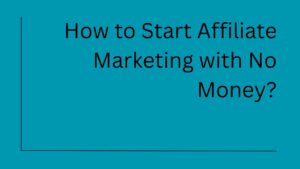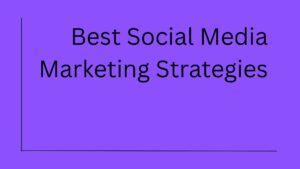For any business or online presence, strategies are essential for success. Marketing has evolved over time, and as new technologies and methods have emerged, so too have new ways to categorize how businesses promote their products and services. Among the most common marketing strategies are ATL (Above The Line), BTL (Below The Line), and TTL (Through The Line). These terms, though not always well-known outside of the marketing community, are fundamental for understanding how businesses approach advertising and consumer engagement.
Let’s explore each of these strategies further to uncover their meaning, differences, and practical examples. By the end of this article, you’ll have a clearer understanding of ATL, BTL, and TTL and how these marketing terms fit into the broader landscape of advertising today.
A Brief History: Where Did The “ATL, BTL, & TTL” Terms Come From?
In The Marketing Book, Michael J. Baker explains that the concept of a “purely hypothetical boundary,” introduced in 1954 by Procter & Gamble, stems from the fact that advertising agencies are compensated in a fundamentally different way than the intermediaries handling other forms of promotional activities.
That year, Procter & Gamble, one of the largest consumer goods companies in the world, also began categorizing its marketing efforts into two distinct types: one for mass marketing (ATL) and another for more targeted, direct promotional activities (BTL). This separation reflected the growing need to differentiate between the broad-reaching strategies of traditional advertising and the more focused, immediate methods used to engage specific consumer groups.
As advertising evolved, so did the need for more precise marketing strategies. The term TTL (Through The Line) emerged as an attempt to blend the best of both ATL and BTL marketing techniques. While the exact timeline of TTL’s introduction is uncertain, it represents a more modern and integrated approach to marketing that merges the mass outreach of ATL with the focused targeting of BTL.
Now that we know where these terms originated, let’s take a closer look at what each one entails.
Understanding the Difference Between ATL, BTL, and TTL Marketing
What is ATL Marketing (Above The Line Marketing)
ATL stands for Above The Line Marketing, and it refers to advertising techniques that target a broad audience using mass media. This type of marketing is untargeted and aims to create awareness and visibility for a brand. Think of it as casting a wide net to ensure that as many people as possible see the message.
Common forms of ATL marketing include:
- Television ads
- Radio commercials
- Print ads in newspapers and magazines
- Billboards
- Online display advertising (banner ads)
These forms of advertising are often considered traditional or “legacy” methods, but they remain incredibly effective for building brand recognition and increasing overall visibility.
Key Characteristics of ATL Marketing
- Broad Reach: ATL marketing reaches large, diverse audiences. There’s no precise segmentation—everyone is exposed to the same message. For example, a nationwide TV ad or a billboard on a busy highway will be seen by countless people from different backgrounds and interests.
- Brand Building: The primary goal of ATL marketing is brand awareness and positioning. It focuses on creating an emotional connection with consumers, helping them recognize and remember the brand. This kind of marketing is perfect for creating long-term goodwill and trust.
- One-Way Communication: ATL marketing is often a one-way communication. Advertisers broadcast their message without direct interaction with the consumer, which can make it harder to gather feedback or measure immediate results.
Example of ATL Marketing
Imagine a large soft drink company launching a TV commercial that runs nationwide. The commercial might feature a catchy song, an entertaining storyline, and visuals that promote the drink’s refreshing qualities. The goal is not to sell the drink immediately, but rather to familiarize consumers with the brand and build long-term awareness. This is ATL marketing in action.
What is BTL Marketing (Below The Line Marketing)
On the other side of the spectrum, we have Below The Line Marketing (BTL). This approach is far more targeted than ATL. BTL marketing focuses on specific groups of consumers, aiming to create direct engagement and immediate action. Unlike ATL, BTL doesn’t rely on mass media channels but uses more personalized methods of communication.
Common examples of BTL marketing include:
- Direct mail campaigns
- Email marketing
- SMS promotions
- Event sponsorship
- Sampling campaigns
- Telemarketing
- In-store promotions
These methods are much more direct and aim to generate measurable responses from a specific audience, often within a shorter time frame.
Key Characteristics of BTL Marketing
- Targeted Audience: BTL marketing is designed to reach a specific group of people. For example, a business might target people who have previously shown an interest in their product or service, such as past customers, email subscribers, or followers on social media.
- Direct Communication: With BTL marketing, brands engage directly with consumers. This could be through personal emails(email marketing), phone calls, or interactive campaigns that require consumer participation. The aim is to prompt an immediate response, whether that’s making a purchase, signing up for a service, or entering a contest.
- Measurable Results: One of the main benefits of BTL is that it offers more tangible and measurable outcomes. Companies can track the direct responses they receive from these campaigns and gauge their effectiveness almost in real-time.
Example of BTL Marketing
A beauty brand might send out free samples of a new product through a targeted direct mail campaign to women who have previously purchased from their website. Accompanying the sample might be a discount voucher for their next purchase. This encourages a direct response from consumers, who may be more likely to make a purchase after trying the sample.
What is TTL Marketing (Through The Line Marketing)
Through The Line Marketing (TTL) is an integrated approach that blends the mass outreach of ATL with the personalized, targeted nature of BTL. It combines the broad reach of traditional marketing with the precision and direct engagement of digital and direct marketing techniques. TTL focuses on utilizing both above-the-line and below-the-line strategies simultaneously to achieve the best of both worlds.
Common examples of TTL marketing include:
- TV ads
- Digital marketing
- Personalized emails
- Influencer Partnerships
- Programmatic Ads
- Native Advertising
TTL campaigns are typically multi-channel, meaning a business will use several touchpoints across various platforms to reach their target audience and prompt both brand awareness and immediate action.
Key Characteristics of TTL Marketing
- Combination of ATL and BTL: As mentioned, TTL merges the best of ATL and BTL. It uses the reach of mass media (like TV and digital ads) to build brand awareness, while also incorporating direct, measurable actions (like targeted email campaigns or personalized promotions).
- Holistic Strategy: TTL focuses on creating a holistic experience for the consumer, guiding them along the entire buyer journey—from awareness to conversion. It doesn’t just rely on one method of communication; it integrates multiple approaches for maximum impact.
- Data-Driven: TTL often relies on data analytics to ensure that the right message reaches the right audience at the right time. This allows businesses to fine-tune their campaigns in real-time and optimize performance.
Example of TTL Marketing
Consider a food delivery service that uses TTL marketing. They might run a TV ad campaign (ATL) to build awareness about their service across the country. At the same time, they could target a specific audience on social media with personalized ads offering discounts (BTL). Additionally, they might send out email promotions to people who have used their app before, encouraging them to return with a limited-time offer.
This approach ensures that they reach a broad audience while also providing targeted incentives to drive conversions.
Comparing the Difference Between ATL, BTL, and TTL Advertising
To better understand the differences between these three approaches, let’s break them down in a simple comparison table:
| Aspect | ATL Marketing | BTL Marketing | TTL Marketing |
| Target Audience | Broad, untargeted | Specific, targeted | Combination of broad and specific targeting |
| Reach | Wide reach, often national/international | Narrow reach, often localized | Wide reach with targeted campaigns |
| Engagement Type | One-way communication | Two-way, direct communication | Multi-channel, integrated communication |
| Examples | TV ads, radio commercials, billboards | Direct mail, telemarketing, email campaigns | TV ads + social media + personalized emails |
| Goal | Build brand awareness | Drive immediate actions and conversions | Build awareness and drive conversions |
| Results | Harder to measure immediately | Easier to track and measure | Combination of brand recognition and immediate results |
Conclusion
By understanding the differences between ATL, BTL, and TTL marketing is crucial for businesses looking to craft the most effective campaigns.
- ATL Marketing is great for broad brand awareness and building long-term recognition.
- BTL Marketing excels in creating direct, measurable actions from a targeted audience.
- TTL Marketing provides the best of both worlds, combining mass reach with personalized, data-driven engagement.
By understanding when and how to apply these strategies, companies can better align their marketing efforts to achieve specific business goals. Whether you’re building brand awareness, generating leads, or driving immediate conversions, ATL, BTL, and TTL are essential frameworks for creating impactful marketing campaigns.






1 thought on “What is the Difference between ATL, BTL, & TTL Marketing?”
Hello to all, the content existing on his website is genuinely amazing for people’s knowledge. Well, keep up the good work, fellows.